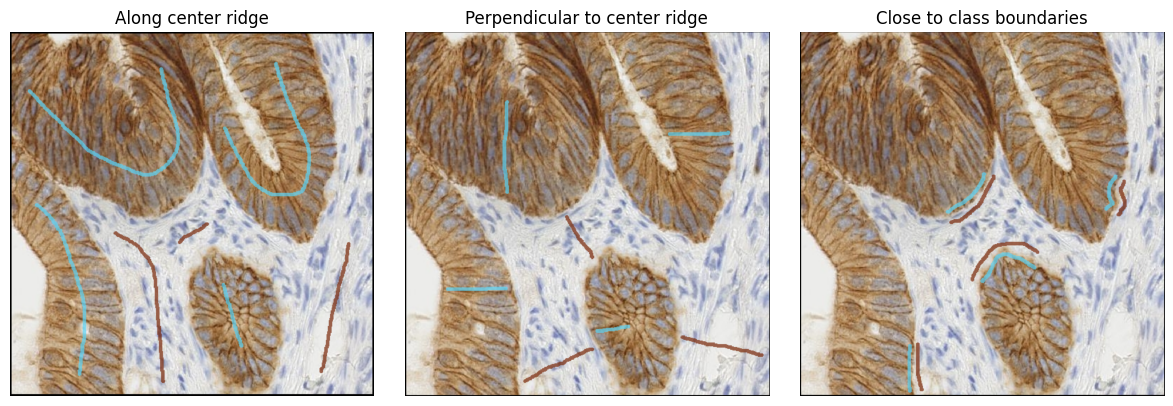A note on annotations#
Since the classifier behind Convpaint is learning specifically from features of the pixels that are annotated by the user, the quality of the annotations is crucial for the performance of Convpaint. While this dependence on good annotations is somewhat different between the various feature extractors, in general it is important to annotate a representative set of pixels for each class.
We recommend for the user to ensure that 3 criteria are met:
Annotations cover pixels along the center ridge of objects or areas that they want to segment; this ensures that the pixels represent all types of longitudinal variation within the object class.
Annotations cover different areas perpendicular to the center ridge of objects or areas that they want to segment; this ensures that the pixels represent all peripheral variation within the object class.
Some annotations are made close to the boundaries between different classes; this ensures that the pixels represent the transition between classes. This is particularly important when using feature extractors that combine low-resolution and high-resolution features, so it can learn to put emphasis on high-resolution features as well, leading to sharper boundaries in the segmentation.
Here are examples for the three types of annotations, which, of course, should be combined in a good annotation strategy:

